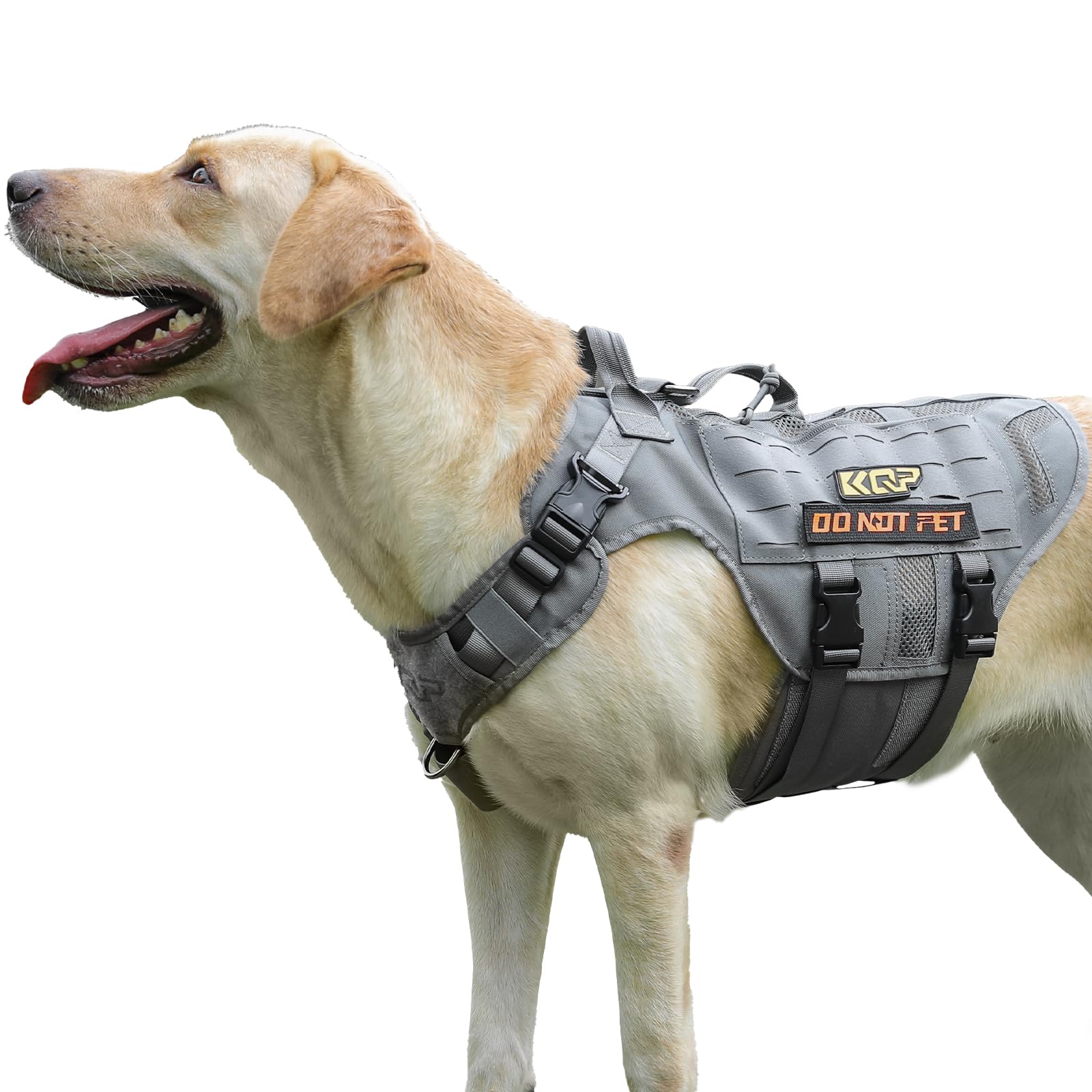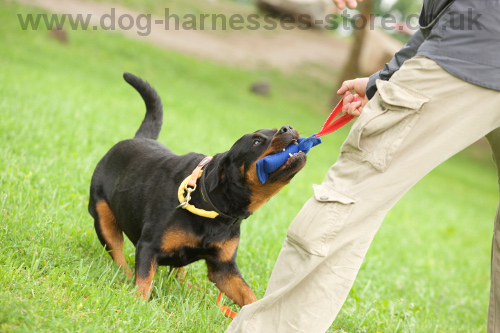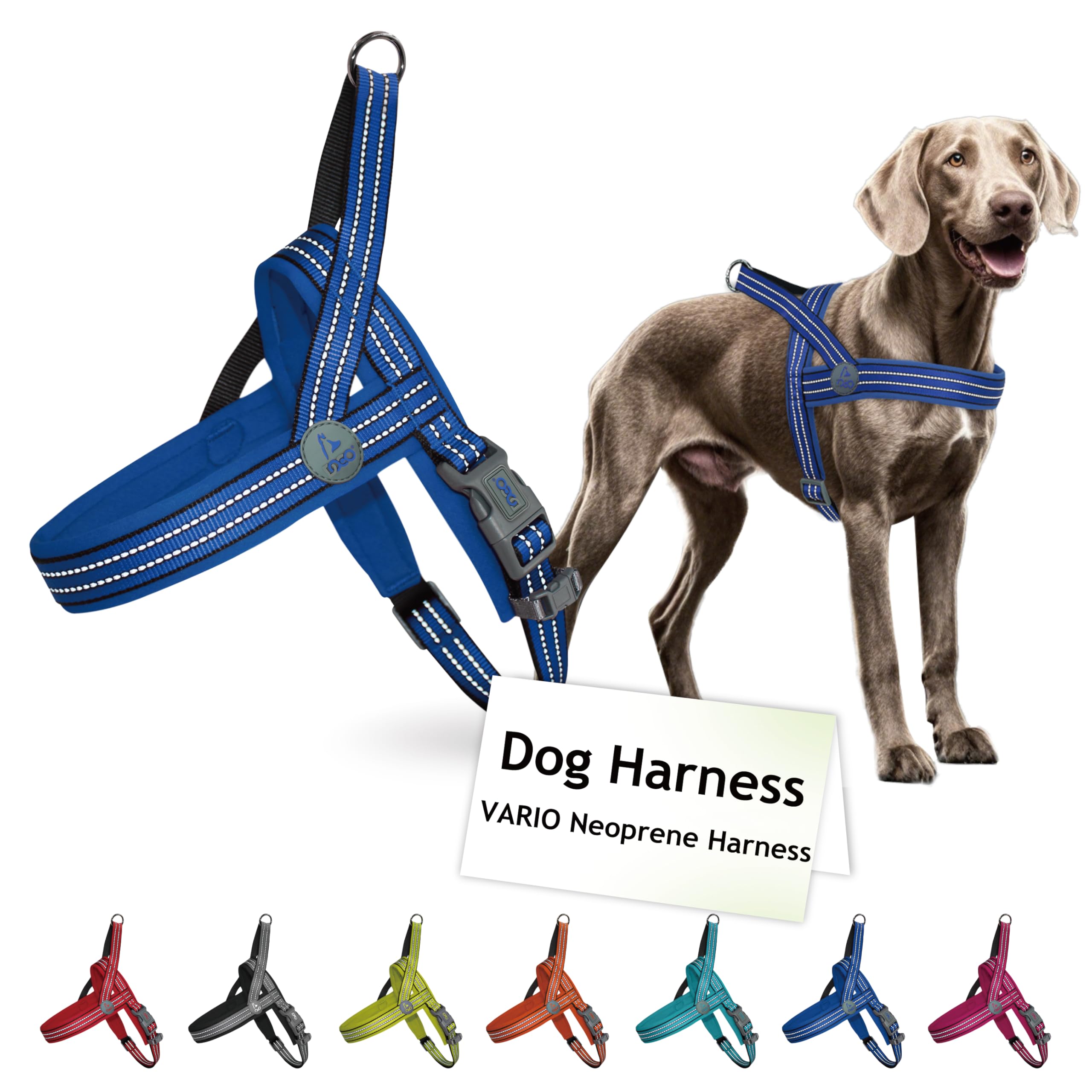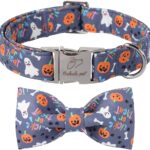Title: Harness Training Tips for Hyperactive Dogs: Effective Techniques for Success
Meta Description: Learn how to harness train your hyperactive dog with these proven tips. Discover strategies for short training sessions, positive reinforcement, and using the right equipment.
Introduction
Harness training tips for hyperactive dogs are crucial for creating a calm and enjoyable walking experience for both you and your pet. Hyperactive dogs, full of boundless energy, often struggle with behaviors like pulling, jumping, or resisting the harness. This can make walks and training sessions frustrating for both dog and owner. But with the right approach, patience, and consistency, you can teach your hyperactive dog to become comfortable with their harness, making walks a fun, controlled activity. In this article, we’ll explore proven techniques to help you harness train your dog effectively, from short training sessions to positive reinforcement.
1. Start with Short Training Sessions
When it comes to training hyperactive dogs, short training sessions are essential. Longer sessions may overwhelm your dog and lead to frustration, which can hinder progress. By keeping training sessions brief but frequent, you can maintain your dog’s focus and keep them motivated throughout the process.
Limiting Training Time
- Short and Sweet: Keep training sessions to 5-10 minutes to prevent your dog from losing interest or getting overwhelmed.
- Frequent Sessions: Instead of one long session, break training into multiple short sessions throughout the day. This helps reinforce the behavior without causing stress.
Frequent Practice for Better Results
- Consistency is Key: Practice regularly, and try to incorporate multiple sessions in a day, especially if your dog has a lot of energy to burn.
- Focus on Positives: Each session should focus on positive reinforcement for calm behavior. This will help your dog build a connection between wearing the harness and receiving rewards.
By keeping sessions short and consistent, you’ll be able to engage your hyperactive dog without overwhelming them. This approach encourages faster learning and better results.
2. Introduce the Harness Gradually
Introducing a harness can be a new experience for hyperactive dogs, especially if they are unfamiliar with wearing one. Gradual exposure is key to reducing anxiety and making the process smoother.
Familiarization with the Harness
- Let Them Explore: Start by placing the harness on the floor and allowing your dog to explore it at their own pace. Tossing treats near the harness can help encourage them to investigate without pressure.
- Avoid Commanding: In the early stages, don’t give verbal commands. Let your dog engage with the harness naturally, so they don’t feel pressured.
No Pressure Interaction
- Allow Sniffing: Once your dog is comfortable, allow them to sniff and touch the harness. Reward every positive interaction, like sniffing or moving closer to the harness.
- Keep It Calm: Avoid forcing your dog to interact with the harness. If they’re hesitant, give them space and try again later.
Gradual introduction to the harness in a low-pressure environment will help your dog feel more at ease and reduce stress when it’s time to wear it.
Related Keyword: Introducing a harness to a hyperactive dog

ALT Text: Found My Animal harness, ideal for hyperactive dogs starting harness training.
3. Build Up to Wearing the Harness
Once your dog is comfortable with the harness itself, the next step is to gradually build up to wearing it. This phase should be done slowly to prevent overwhelming your dog and to encourage positive associations with wearing the harness.
Resting the Harness on Their Back
- Gentle Introduction: Begin by gently placing the harness on your dog’s back without buckling it. Reward them immediately if they stay calm and relaxed during this process.
- Calm Behavior is Key: It’s important to reward your dog for calm behavior while the harness is resting on their back. This reinforces that calmness leads to positive outcomes.
Buckling Up for Success
- Take It Slow: After a few successful interactions, gradually progress to buckling the harness while your dog is calm. Don’t rush this step; take your time and allow your dog to get used to the sensation.
- Repeat and Reinforce: Keep practicing this process and reward your dog each time they remain calm while the harness is on. The goal is to create a positive, stress-free association with the harness.
As your dog becomes accustomed to wearing the harness, they’ll learn to remain calm, and this will make the transition to walking much easier.
Call to Action
Ready to start training your hyperactive dog with a high-quality, comfortable harness? Visit Found My Animal for the perfect training harness. Don’t forget to use mytopdeals10 to get 10% off your first order!
4. Practice Indoors Before Going Outside
Before venturing outdoors, it’s important to practice with the harness indoors. A controlled environment with fewer distractions allows your dog to get used to the harness and leash without the added excitement of the outside world. This stage builds confidence and reduces anxiety when transitioning to outdoor walks.
Controlled Environment for Initial Training
- Choose a Quiet Space: Start by practicing in a quiet room or a space where your dog feels comfortable. Avoid overwhelming them with too many stimuli.
- Short Indoor Walks: Once the harness is on, walk around the house with your dog on the leash, encouraging them to stay by your side. Use treats as rewards when they walk calmly beside you.
- Maintain Focus: Keep the leash relaxed and reward your dog for walking calmly. This encourages positive behavior before taking them outside.
Gradual Transition to Outdoor Walks
- Short Outdoor Sessions: Once your dog is comfortable walking indoors with the harness, transition to outdoor walks in low-traffic areas, such as quiet parks or your yard.
- Increased Exposure: Gradually increase the length of walks and the level of distractions as your dog gets more comfortable with the harness and leash.
By practicing indoors first, your dog will have the confidence to handle outdoor walks and new environments. This gradual approach helps them stay calm and focused during walks, making the process smoother.
Related Keyword: Leash training indoors for hyperactive dogs

ALT Text: Hyperactive dog practicing leash training indoors with a comfortable harness.
5. Use Positive Reinforcement Techniques
Positive reinforcement is essential for successful harness training, especially for hyperactive dogs. Rewarding good behavior helps create a strong connection between wearing the harness and receiving rewards, making the process enjoyable for your dog.
Rewards for Calm Behavior
- High-Value Treats: During training, offer your dog high-value treats that they find irresistible. This will motivate them to stay focused and behave well during training sessions.
- Praise and Encouragement: Along with treats, use praise and petting to reinforce calm behavior. Positive words like “Good job!” or “Well done!” will help your dog associate the training with something positive.
- Use Toys for Play: After a successful session, play with your dog using their favorite toy as a reward. This keeps the training fun and engaging for them.
Ending Sessions Positively
- Always End on a High Note: Finish each training session with a positive outcome. Whether it’s a calm walk around the house or your dog wearing the harness for longer periods, always reward them at the end to ensure they leave the session happy and confident.
- Keep Sessions Fun: Make training enjoyable. Avoid making it feel like a chore, as this could result in your dog becoming frustrated or disengaged.
By using positive reinforcement, you create a fun and rewarding training experience that encourages good behavior and makes harness training more enjoyable for your dog.
Related Keyword: Positive reinforcement in dog harness training
6. Choose the Right Harness
Choosing the right harness is crucial to your dog’s comfort and the success of your training. The right fit can prevent discomfort, ensure better control, and encourage your dog to be more cooperative during training sessions.
Front Clip vs. Back Clip Harness
- Front Clip Harness: A front clip harness is particularly useful for hyperactive dogs as it helps prevent pulling. By redirecting your dog’s movement towards you, it gives you more control and discourages bad behaviors like pulling or lunging.
- Back Clip Harness: While a back clip harness is often more comfortable and works well for less energetic dogs, it might not provide as much control for hyperactive dogs. However, it’s still a great option for well-behaved dogs that don’t pull as much.
Proper Fit and Comfort
- Snug but Comfortable Fit: Ensure the harness fits snugly but is not too tight. You should be able to fit two fingers between the harness and your dog’s body for comfort. A proper fit ensures your dog feels secure without chafing or discomfort.
- Breathable Materials: Look for harnesses made from soft, breathable materials like cotton or mesh to prevent overheating and ensure comfort during long training sessions or walks.
Related Keyword: Choosing the best dog harness for training

ALT Text: Comfortable Found My Animal harness, designed for effective training and comfort for hyperactive dogs.
FAQs
What makes Found My Animal products unique?
Found My Animal products are unique because they are handmade with high-quality materials, offering both durability and style. Their products are designed to be comfortable for dogs and durable for everyday use, making them an excellent choice for training. The company also offers a range of customizable options, such as adding your dog’s name or medical tags to their collars, enhancing functionality and personalization.
How can I use the discount code mytopdeals10 at checkout?
To use the mytopdeals10 discount code, visit Found My Animal, select the products you want, and proceed to checkout. In the checkout section, enter the code mytopdeals10 in the promo code box, and your 10% discount will be applied to your total order.
How do I choose the right harness for my hyperactive dog?
When selecting a harness for a hyperactive dog, consider a front clip harness as it provides better control and discourages pulling. Make sure the harness is the right size—snug but not too tight—to ensure your dog’s comfort. Choose soft, breathable materials to prevent discomfort during long walks or training sessions.
Conclusion
Incorporating harness training tips for hyperactive dogs into your routine is an effective way to help your dog learn to walk calmly and comfortably. By using short training sessions, introducing the harness gradually, and reinforcing positive behavior with rewards, you can ensure a successful training process. Choosing the right harness and consistently practicing will make walks more enjoyable and manageable for both you and your dog.
Call to Action:
Start your harness training journey today with Found My Animal. Choose from a wide selection of stylish, durable harnesses that will make training your hyperactive dog easier. Don’t forget to use mytopdeals10 for 10% off your order!
This article provides you with effective techniques and practical advice to help you successfully train your hyperactive dog to wear a harness. Follow these steps to ensure that your dog enjoys the process and becomes comfortable with their harness over time.


